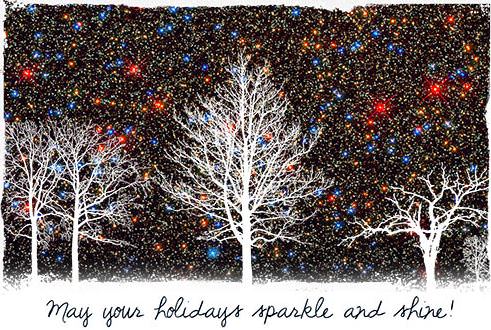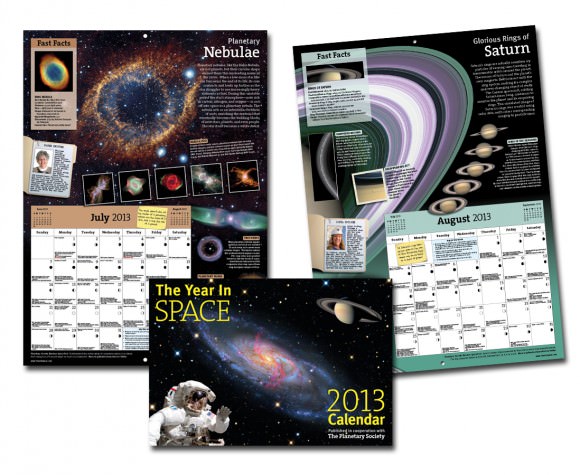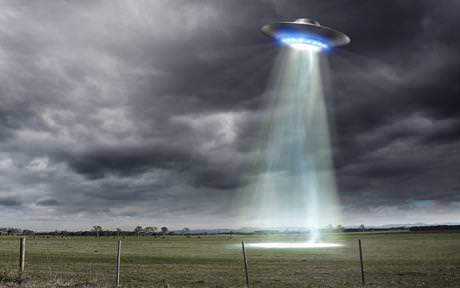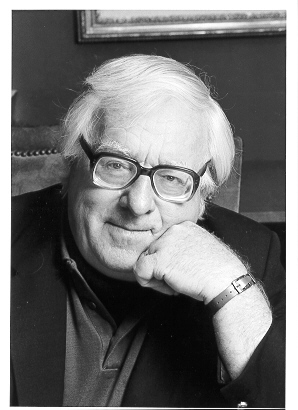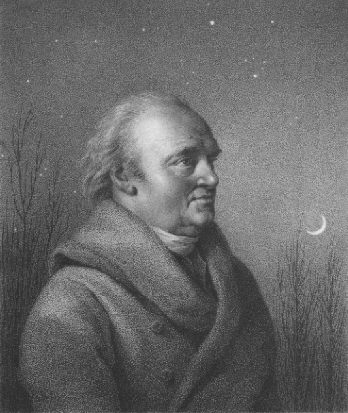Here is a sample of the extra content you can get if you join our Patreon campaign, and support the Guide to Space video series! We hope you laugh a bit at these bloopers from Guide to Space episodes 221-228, and like it enough to join us!
Continue reading “Guide to Space Bloopers: Eps 221-228”
I’ve Always Dreamed of Being an Astronaut…
After seeing this on Google+, I knew I had to do a Bad Astronomer-like “want” post. This is a definite want. You can now be the first in your galaxy to have this awesome new bedding set. The duvet and pillow comes from a Dutch bedding shop named Snurk (that’s Dutch for ‘snoring’): “Underneath these sheets you will dream far beyond the stars…lie down, close your eyes and feel gravity decrease instantly.” They are now taking pre-orders, available in March.
Hat tip to Michael Interbartolo/Edward Burke
Space: The Last Minute Holiday Gift Idea Frontier
I’m a last minute shopper, and luckily there are a lot of spacey gifts and greetings that you can still take advantage of. For example in the greeting card department, the Hubble Holiday Cards are fabulous, with loads of imagery from everyone’s favorite space telescope — such as the one above — that can be printed out and sent as cards, or it’s easy to nab one of their holiday greeting images to send via email, as I have done in the past! If you are looking for e-greeting cards, the European Space Agency has a great collection of images that can be sent to anyone in your email list.
What else?
Here’s a great deal and a way to support astronomy around the world: Astronomers Without Borders have recently added some great astronomy gear and goodies to their store for the holidays — and it’s a win-win situation for everyone, as many of these items are donations from manufacturers who support AWB, so they get 100% of proceeds!
If you aren’t familiar with AWB, they help support astronomy programs around the world, supplying resources and support for astronomy outreach. So, whether you’re buying a gift for someone else or for yourself, you can feel great about a purchase from the AWB store knowing it will be supporting great astronomy programs.
Hubble Star Cards are gorgeous, large playing cards for any age, now available in a high-quality, stunningly beautiful printed card set.
The cards are a just a bit larger than a normal card deck, at 3 inches by 5×5 inches, so the beautiful Hubble images are bigger and better. They sell for $24.95, but Universe Today readers can get 15% off using UNIVERSE as a coupon code. Check them out at the Hubblestarcards.com website.
The game includes 60 cards categorized by planets, planetary nebulae, supernovae remnants, nebulae, star clusters and galaxies, and possible games include War, Go Fish, Sorting, Distances and Matching. Although targeted for students 8 and older, preschoolers have played many of the games just by using the amazing imagery as a guide.
Also, we’ve been promoting the Year in Space 2013 Wall Calendars, and they truly are fabulous. The Wall Calendar was recently named “Science Geek Gift of the Year” over at Alan Boyle’s MSNBC’s Cosmic Log, — where you can see some other gift ideas.
As a special bonus, Universe Today readers pay only $12.95 per copy (or less), with free U.S. shipping and discounted International shipping. Again, visit Year in Space 2013 Wall Calendars,
While you are probably past the date for shipments on any of the above merchandise arriving before Christmas, a little preview of what is on the way could be placed in a stocking.
Poll: Obama Better Than Romney at Defending Earth from Alien Attack
Not quite sure this is really relevant or at all scientific, but nearly two in three Americans think President Barack Obama would be better than Republican rival Mitt Romney in dealing with an alien invasion, according to a poll done by the National Geographic Channel. Surely, this is in response to the claim that Obama was teleported to Mars as a youth to meet and greet the Martians living there.
In addition, disappointingly, 36% of Americans believe UFOs exist, and 11% claim they have actually seen one, and 20% said they know someone who has seen one, the poll also determined.
In May, the NGC contacted 1,114 adults across the United States to conduct an opinion poll for its new documentary series “Chasing UFOs.” The show premiers Friday with Texas and Colorado residents describing their encounters with mysterious flying objects. Hopefully there will be some science and reality behind this new series. The Houston Chronicle says the new series is a lot like the show “Finding Bigfoot,” and is by the same producers.
Groan.
Lead image caption: Artist concept of a UFO. Photo: Getty Images, via The Telegraph.
Source: Yahoo News
Science Fiction Author Ray Bradbury Dies
[/caption]
Author Ray Bradbury — who sent generations of readers on travels to fantastic future worlds — has died this morning in Los Angeles, at the age of 91.
Author of more than 27 novels and story collections, such as his famous “The Martian Chronicles,” the enduring “Fahrenheit 451,” “Dandelion Wine” and “Something Wicked This Way Comes,”and more than 600 short stories, the influential Bradbury has been credited with bringing a bit of class to science fiction, helping to move the sometimes maligned genre into the real literature.
In a podcast on the 365 Days of Astronomy, Bradbury said that he wanted to be buried on Mars.
“I don’t want to be the first live person to arrive there,” he said. “It’ll be too late. But I want to be the first dead person that gets there. I want to arrive in a Campbell’s soup can. Bury me on Mars in thing called the Bradbury Abyss. They gotta name a place on Mars for me, and I will welcome that.”
Bradbury definitely needs to have a place on Mars named after him.
Bradbury wrote this advice in “Fahrenheit 451”: “Stuff your eyes with wonder, live as if you’d drop dead in 10 seconds. See the world. It’s more fantastic than any dream.”
Ray Douglas Bradbury was born Aug. 22, 1920, in Waukegan, Illinois and used the ambiance of small time life to enhance his fiction.
“When I was born in 1920,” he told the New York Times Magazine in 2000, “the auto was only 20 years old. Radio didn’t exist. TV didn’t exist. I was born at just the right time to write about all of these things.”
Bradbury will be missed.
The sad news came via i09.
Obama and Uhura Go Vulcan

[/caption]
Obama is definitely going for the geek vote with this image, which actress Nichelle Nichols posted on her Twitter account. As one commenter mentioned, the Birthers will probably now claim Obama was born on Vulcan.
New Year – New Calendar… But Johns Hopkins Scholars Say We Need A Permanent Edition
[/caption]
It’s another new year and time to remember to write new dates again. While it might take a few weeks to remember to do it right first time, Johns Hopkins Scholars say our traditional calendar needs a major overhaul. By utilizing computer programs and mathematical formulas, Richard Conn Henry, an astrophysicist in the Krieger School of Arts and Sciences, and Steve H. Hanke, an applied economist in the Whiting School of Engineering, have devised a new calendar where each year is identical to the year before it… and the year after.
Dubbed the Hanke-Henry Permanent Calendar, there would be no problem remembering dates. For example, if your birthday was Thursday, May 10, it would remain Thursday, May 10 throughout eternity. Can you fathom holidays always being on the same day of the week? Or a weekend date always remaining the same? All the same… Always.
“Our plan offers a stable calendar that is absolutely identical from year to year and which allows the permanent, rational planning of annual activities, from school to work holidays,” says Henry, who is also director of the Maryland Space Grant Consortium. “Think about how much time and effort are expended each year in redesigning the calendar of every single organization in the world and it becomes obvious that our calendar would make life much simpler and would have noteworthy benefits.”
Of course, it would seem rational to have certain dated functions, such as work holidays, religious holidays and even birthdays fall on the same date each year. However, according to Hanke, an expert in international economics, the monetary benefits would be the real motivation behind such a change… ones that should motivate the consumer.
“Our calendar would simplify financial calculations and eliminate what we call the ‘rip off’ factor,” explains Hanke. “Determining how much interest accrues on mortgages, bonds, forward rate agreements, swaps and others, day counts are required. Our current calendar is full of anomalies that have led to the establishment of a wide range of conventions that attempt to simplify interest calculations. Our proposed permanent calendar has a predictable 91-day quarterly pattern of two months of 30 days and a third month of 31 days, which does away with the need for artificial day count conventions.”
But is the Hanke-Henry Permanent Calendar a true progression over various forms of permanent calendars that have been proposed before? “Attempts at reform have failed in the past because all of the major ones have involved breaking the seven-day cycle of the week, which is not acceptable to many people because it violates the Fourth Commandment about keeping the Sabbath Day,” Henry explains. “Our version never breaks that cycle.”
Sure, the current Gregorian calendar has been working for 430 years now. What’s the point in change? It, too, was an alteration to a calendar put forth in 46 BC by Julius Caesar to stay in sync with the changing seasons. The real problem is we humans just have to deal with a celestial calendar in which a true year is 365.2422 days long. The new calendar simply proposes we add an extra week every so often to make up for the fragmented days. But personally, I can’t see where this is any different than the concept we are already working under! If we’re adding an extra week every five or six years at the end of December, is that really any different than the few months that sport an extra day…. or leap year for that matter?
Yeah. Well, they don’t want to stop there, either. They are also in favor of doing away with world time zones by fully adopting GMT. “One time throughout the world, one date throughout the world,” they write, in a January 2012 Global Asia article about their proposals. “Business meetings, sports schedules and school calendars would be identical every year. Today’s cacophony of time zones, daylight savings times and calendar fluctuations, year after year, would be over. The economy – that’s all of us – would receive a permanent ‘harmonization’ dividend.”
Is it really harmony or just another way of putting us in neat, little boxes? Maybe we humans like our confusion. Maybe if it’s not broke, we don’t need to fix it. For those of us who practice astronomy, we already use both GMT and (in some circumstances) a Julian calendar as well. Do we really need to standardize everything? We’ve tried with money and we’ve tried with measurements. What’s next? We should all be born the same sex with exactly the same features so we can standardize the human population, too? Think of all the money that could be saved from the fashion industry alone! Then we’d need to have exactly the same tastes. That would make it ever so much easier to standardize food. No need to be wasting perfectly good dishes because one liked it and one didn’t. Maybe we all need the same sense of humor, that way we could just tell standard jokes. Perhaps we could all find exactly the same set of tones agreeable, so one song would do us all. Of course, it’s just my opinion, but…
Move over, Mr. Roboto.
Original Story Source: John Hopkins University Press Release. For further opinions and reading: Wired Science.
Happy Birthday, Sir William Herschel!
On this day in 1738, an astronomy legend was born – Sir William Herschel. Among this British astronomer and musician’s many accomplishments, Herschel was credited with the discovery of the planet Uranus in 1781; detecting the motion of the Sun in the Milky Way in 1785; finding Castor’s binary companion in 1804 – and he was the first to record infrared radiation. Herschel was well known as the discoverer of many clusters, nebulae, and galaxies. This came through his countless nights studying the sky and writing catalogs whose information we still use today. Let’s take a brief, closer look at just who he was…
Born as Frederick William Herschel, this Hanover, Germany native had nine brothers and sisters. During his teenage years, he and his brother, Jakob, were oboists in a military band. When war ensued, his father sent the pair to England to escape. Once there, Herschel continued his musical career by playing cello and harpsichord – eventually composing 24 symphonies, a handful of concertos and religious music. He continued to be a musician, with many appointments, until middle age. Most of his family also migrated to England, the most famous of which is his sister Caroline, who came to live with him in 1772.
But it wasn’t music that was Herschel’s passion. After he met English Astronomer Royal Nevil Maskelyne, he began construction on his own reflector telescope, spending up to 16 hours a day grinding and polishing the speculum metal primary mirrors. By age 35 he’d begun his astronomical journey in earnest – and a year later he began recording his observations from the Great Orion Nebula to the rings of Saturn. Sir William’s interest was taken by the study of double stars and with a 160mm telescope of his own construction, he began a systematic search for binaries among “every star in the Heavens” in October, 1779 and continued listing discoveries through 1792, eventually compiling three catalogs.
 During this time he continued to support himself and his sister with his music. In her biography, Caroline recounts how he would rush home between acts to scan the skies – and how she often had to clean pitch from mirror-making from his clothes to make him presentable. From 1782 to 1802, Sir William swept the skies, recording all he saw and sharing his discoveries with other astronomers. So devoted was he, that he even gave Caroline her own telescope in 1783, encouraging her to also make her own observations and discoveries. Herschel published his discoveries as three catalogues, a walloping 2400 entries, filled with distant nebulae and cosmic wonders. Over the time of his astronomical career, Herschel constructed more than four hundred telescopes – the most famous of which had an almost 50 inch diameter mirror and a 40 foot focal length!
During this time he continued to support himself and his sister with his music. In her biography, Caroline recounts how he would rush home between acts to scan the skies – and how she often had to clean pitch from mirror-making from his clothes to make him presentable. From 1782 to 1802, Sir William swept the skies, recording all he saw and sharing his discoveries with other astronomers. So devoted was he, that he even gave Caroline her own telescope in 1783, encouraging her to also make her own observations and discoveries. Herschel published his discoveries as three catalogues, a walloping 2400 entries, filled with distant nebulae and cosmic wonders. Over the time of his astronomical career, Herschel constructed more than four hundred telescopes – the most famous of which had an almost 50 inch diameter mirror and a 40 foot focal length!
In later years, he and Caroline moved on to Windsor Road in Slough… a residence which would eventually be come to known as “Observatory House”. It was during this time he married and eventually had a son – John. Caroline also moved on, yet continued to be his secretarial assistant. Sir William’s astronomical career was quite illustrious – so much so that this article only highlights a few of his accomplishments. He observed and recorded the satellites of his discovery, Uranus, along with more obscure moons belonging to Saturn. He did work with infrared radiation, popularized the term “asteroid”, studied the martian polar caps – revealing them as seasonal – and may very well have been the first to discover the rings of Uranus. His lack of a formal “astronomical education” never slowed Sir William Herschel down!
“I have looked further into space than ever human being did before me. I have observed stars of which the light, it can be proved, must take two million years to reach the Earth.”
Herschel’s life ended at a ripe old age of 84… Passing on at his beloved Observatory House. His son, John Herschel, would carry on in his father’s footsteps and also became a famous astronomer. While few of us will ever be able to match Herschel’s passion for astronomy, at least we can take a moment to look at the stars and wish this astronomy “great” a very happy birthday!
Gunman Takes Hostage At Discovery Channel Building
UPDATE: Three hostages have been released unharmed, and the suspect, James J. Lee, was shot at about 4:50 p.m. EDT by police. The latest reports say he was killed.
Lee, armed with a gun and an explosive device entered the Discovery Communications building in Silver Spring on Wednesday afternoon and took several people hostage including a security guard, Montgomery County Police said.
Some breaking news via former UT writer Ian O’Neill who now works for Discovery Space News: A protester has taken at least one hostage at the Discovery Channel building in Silver Spring, Maryland. Reportedly a man entered the lobby and may have fired a weapon and declared, “Nobody is going anywhere,” according to Montgomery County police. Other reports said the gunman may have had explosives attached to his chest. The building has been evacuated, including an in-house daycare center, but a live news feed on TBD recently showed medical personnel bringing in a stretcher. Via Twitter, there is link to a list of demands to the Discovery Channel by someone named “Lee.” NBC just reported that the alleged gunman is James Jay Lee, who has a history of protesting outside the Discovery Channel building.
We’ll provide an update when it becomes available. Thankfully, Ian is not at the building.



